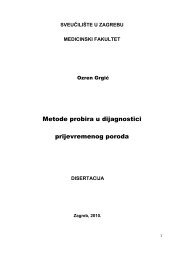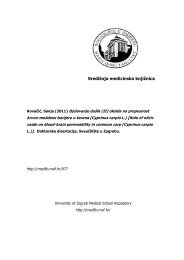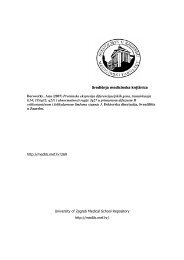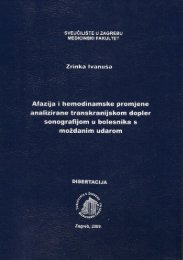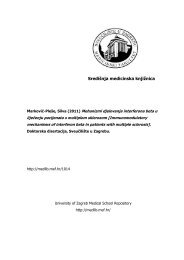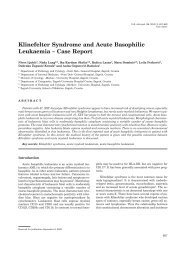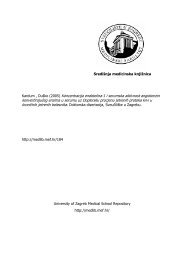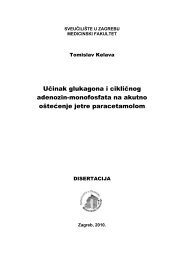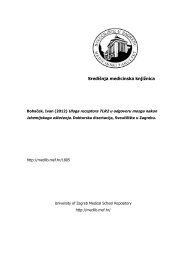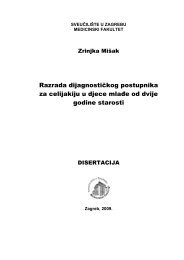Algorithm for classification and treatment of poststernotomy wound ...
Algorithm for classification and treatment of poststernotomy wound ...
Algorithm for classification and treatment of poststernotomy wound ...
You also want an ePaper? Increase the reach of your titles
YUMPU automatically turns print PDFs into web optimized ePapers that Google loves.
IntroductionThe reported incidence <strong>of</strong> sternal <strong>wound</strong> infection after median sternotomy ranges from 0.4%to 5.9% [1], but the mortality is still high, varying from 14% [2] to 47% [3]. Obviously, thisclinical entity, after cardiac surgical procedures, is still a significant problem.There has been a trend <strong>for</strong> cardiac surgeons to prefer a more conservative approach tothe <strong>treatment</strong> <strong>of</strong> sternal <strong>wound</strong> infections with rewiring <strong>of</strong> the sternum <strong>and</strong> closed mediastinalirrigation. Pedicled flaps have been reserved as a second line <strong>treatment</strong> in case the first fails[4]. Plastic surgeons prefer a more aggressive approach with early debridement <strong>and</strong> closurewith the muscle flaps <strong>of</strong> infected median sternotomy <strong>wound</strong>s as “the st<strong>and</strong>ard against whichall other <strong>treatment</strong> modalities must be compared” [5].There is also the question <strong>of</strong> the best timing <strong>of</strong> the reconstruction. A one-stageprocedure has been advocated, <strong>and</strong> confirmed in more recent reports [6]. As a modification <strong>of</strong>the procedure, a short intraoperative inflation <strong>of</strong> the SpaceMaker balloon to exp<strong>and</strong> pectoralismajor <strong>and</strong> enable tensionless closure has been described [7]. A two-stage closure has beensuggested by Pairolero et al. [8]. As a bridge between debridement <strong>and</strong> delayed closure intwo-stage <strong>wound</strong> <strong>treatment</strong>, vacuum assisted closure was recently described [9].Finally, the debate has also been oriented towards the choice <strong>of</strong> initial reconstructivematerial. While most advocate the use <strong>of</strong> pedicled muscle or musculocutaneous flaps as thefirst choice <strong>and</strong> an omental flap only as a “life boat”, others prefer to use the omental flapinitially as proposed by Lopez–Monjardin et al. [10].Free flaps are also an option <strong>for</strong> sternal reconstruction [6].In line with the experience that we gained during the recent war in Croatia with the<strong>treatment</strong> <strong>of</strong> lower extremities war <strong>wound</strong>s as high-energy <strong>wound</strong>s or defects, we prefer the“pseudo-tumoral” approach to infected <strong>poststernotomy</strong> <strong>wound</strong>s, consisting <strong>of</strong> radical




